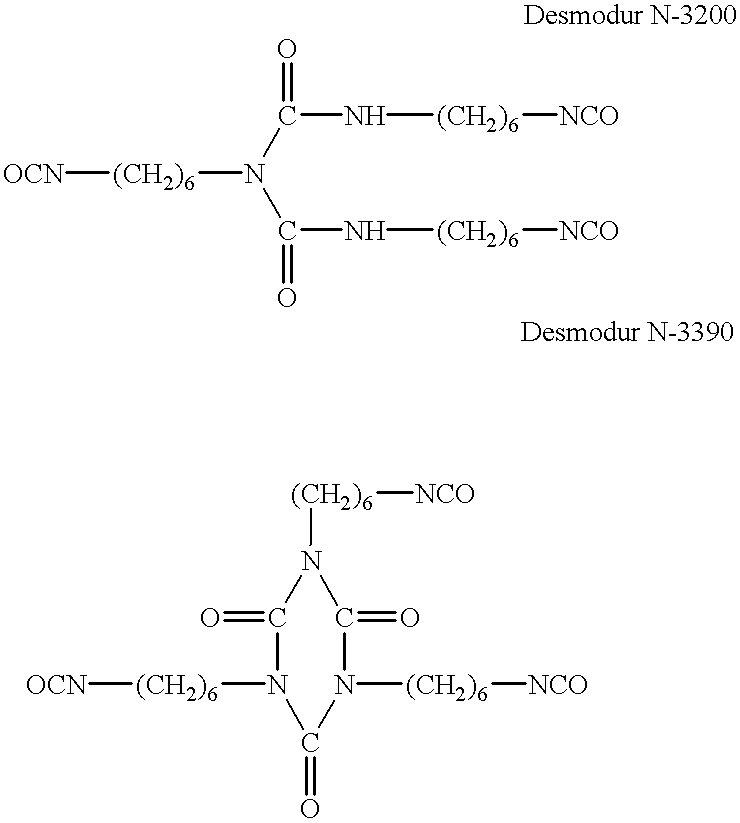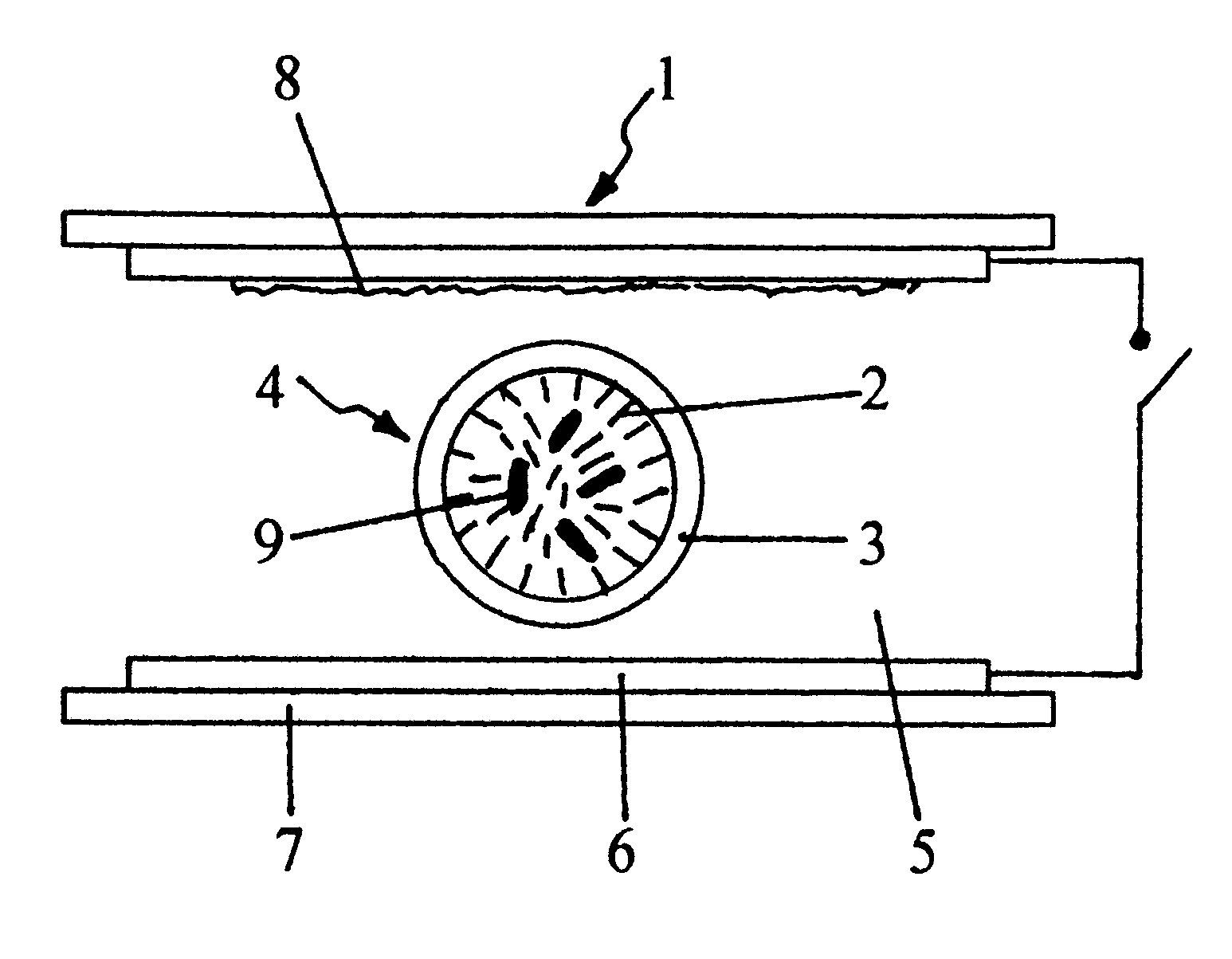Microencapsulated liquid crystal and method
a liquid crystal and micro-encapsulation technology, applied in the field of liquid crystals, can solve the problems of dichroic based ncap film suffering problems, reducing optical efficiency, and becoming transparent, and achieves stable display, prolonging display life, and increasing display contrast
- Summary
- Abstract
- Description
- Claims
- Application Information
AI Technical Summary
Benefits of technology
Problems solved by technology
Method used
Image
Examples
example 2
Desmodur N-3200 (0.18 g) was dissolved in 3 g of E49 (available from BDH Chemicals, England) at 80.degree. C., which was undergoing constant stirring. The mixture was then poured into a solution of 18 g of 10% PVA, also undergoing stirring, and emulsified using Dyna-Mix stirrer (available from Fisher Scientific) at 50.degree. C. and 6500 rpm for 2 minutes, in order to obtain a particle size of 2 to 8 microns. The stirring speed was reduced to 2500 rpm and the reaction was continued at 55.degree. C. for eight hours. During the reaction, 0.16 g of 50% triethylamine (available from Aldrich Chemical Co.), and 0.31 g of 10% ethylenediamine were added in two to four portions at 0.5 to 1 hour intervals. After 10-hour reaction, 0.37 g of 10% NH.sub.4 OH was added to the solution, which was then allowed to stand overnight, without heating or stirring. The purification of the resulting slurry and the film preparation were the same as previously described. The PVA-dispersed film showed some ha...
example 3
Desmodur N-3200 (0.24 g) was dissolved in 4 g of FEE1 at 60.degree. C., which was undergoing constant stirring. The mixture was poured into a solution of 17 g of 10% PVA, also undergoing stirring, and emulsified at 55.degree. C. and 6500 rpm for 2 minutes. The particle size was about 1 to 9 microns. The reaction was continued at 2500 rpm and 55.degree. C. for 11 hours. During the reaction, 0.40 g of 10% DABCO and 0.51 g of diethylene glycol (available from Aldrich Chemical Co.) were added to the solution in three portions at half an hour interval. After the reaction was complete, 0.37 g of 10% NH.sub.4 OH was added to the solution. The resulting slurry was allowed to stand at room temperature, without heating or stirring. After purification by centrifugation, the wet cake was re-dispersed in NeoRez R967 and 20% PVA solution, respectively. The film prepared with NeoRez R967 showed some haze at 60 to 70 Volts with 90% transmission. While the film prepared with 20% PVA showed low haze ...
example 4
Desmodur N-3200 (0.15 g) was added to 2.5 g of E49, the resulting mixture was then heated at 80.degree. C., which was undergoing constant stirring, for 10 minutes and then poured into a solution of 18 g of 10% PVA, also undergoing stirring, and emulsified at 55.degree. C. and 6500 rpm for 2 minutes. The particle size was about 1 to 6 microns. The reaction was continued at 2500 rpm and 55.degree. C. for 10 hours. During the reaction, 0.60 g of 10% DABCO, 0.51 g of diethylene glycol, 0.07 g of dibutyltin diacetate (available from Aldrich Chemical Co.), and 0.20 g of 10% ethylenediamine were added to the solution in four portions at 0.5 to 1 hours intervals. After the reaction was complete 0.37 g of 10% NH.sub.4 OH was added to the solution. The resulting slurry was again allowed to stand at room temperature, without heating or stirring. After purification by a centrifuge, the wet cake was re-dispersed in a solution of 20% PVA. The PVA prepared film showed low haze at 30 to 40 Volts wi...
PUM
| Property | Measurement | Unit |
|---|---|---|
| temperature | aaaaa | aaaaa |
| temperature | aaaaa | aaaaa |
| temperature | aaaaa | aaaaa |
Abstract
Description
Claims
Application Information
 Login to View More
Login to View More - R&D
- Intellectual Property
- Life Sciences
- Materials
- Tech Scout
- Unparalleled Data Quality
- Higher Quality Content
- 60% Fewer Hallucinations
Browse by: Latest US Patents, China's latest patents, Technical Efficacy Thesaurus, Application Domain, Technology Topic, Popular Technical Reports.
© 2025 PatSnap. All rights reserved.Legal|Privacy policy|Modern Slavery Act Transparency Statement|Sitemap|About US| Contact US: help@patsnap.com



